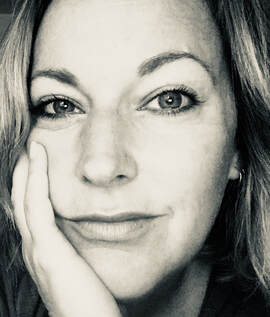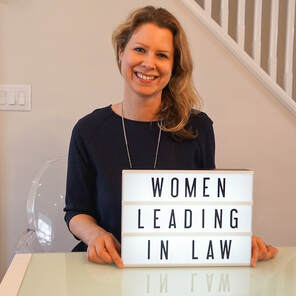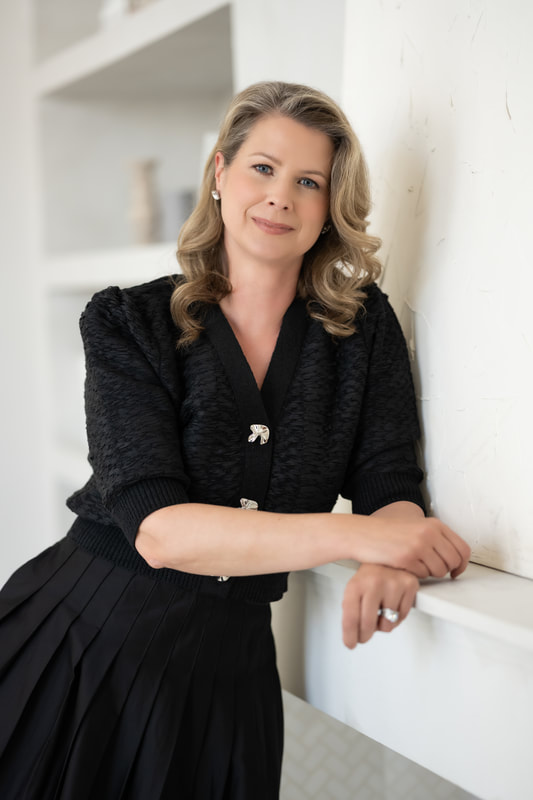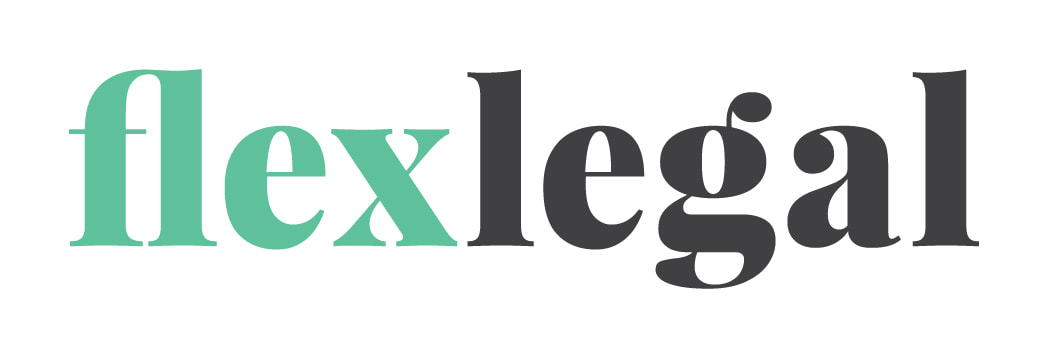 Meet Megan Keenberg, today's leading lawyer. I met Megan several years ago (likely at one of the many networking events we lawyers used to go to - remember cocktail parties?) but I never knew this side of Megan I until I read her wonderful answers in this profile. Her journey to law is fascinating and she shares so many great nuggets of wisdom: 1. Tell me a little about your practice or business. I am a partner with Van Kralingen & Keenberg LLP, better know as V|K Law. We are a commercial litigation and employment law boutique, focused primarily on solving business problems. I am a Certified Specialist in Civil Litigation and I manage complex commercial cases involving shareholder and creditor disputes, breach of contract, professional negligence, fraud, and employment issues. I am also a Mediator and Arbitrator, having completed Osgoode’s LL.M. in Dispute Resolution and the Toronto Commercial Arbitration Society’s Gold Standard Course. My dispute resolution practice centres mainly on business disputes, but also includes civil disputes more broadly. 2. Why did you go to law school? I never considered a legal career until the summer before I started law school as a mature student at age 30. Once the idea occurred to me, it seemed clear, in retrospect, that my previous career paths led me to law, albeit in a pretty unorthodox way. Prior to law school, I had a long-standing career as an actor which led me to the New York theatre scene, and a side hustle as a bartender so I could pay my rent. My side hustle morphed into a hospitality consultancy business, and later led to a sweat-equity stake as an owner-operator of a neighbourhood bar in Brooklyn. I gained valuable skills and experiences in these roles that uniquely prepared me for business advocacy – empathy, a sense of narrative, a non-judgmental view of the human condition, communication and presentation skills, organizational and management skills, a very thick skin and strong sense of self, and a deep appreciation for the value of business relationships, especially in a handshake industry. The catalyst to my career change and ultimate decision to go to law school happened early on a Tuesday morning in September, 2001. I awoke to watch the Twin Towers crumble from my bedroom window, and everything changed in a flash. I was seized by a strong need to do something – to offer practical tangible help – and that need has not since abated. In the initial aftermath, I did practical things like delivering food to first responders at Ground Zero and matching employee sign-in logs with lists of missing persons to help identify those presumed dead. The work I had been doing as an actor, a business owner and even the volunteer work I did as a community organizer felt small and fractured in comparison. As the immediate emergency waned, I started, for the first time, to think strategically about how I could make a more significant impact. And I was faced with another pressing challenge – immigration policies changed as a result of 9/11 making it increasingly difficult to maintain my business and life in the US as a foreign national. So, I came back to Canada to start fresh. Since I started acting at a young age, I never grappled with the angsty question about what I wanted to be when I grew up until I was already grown up. At age 30, I started asking myself the bigger questions: what could I contribute? What was I good at? What did I like doing? What did I need? As I reflected on my newly defined goal to make meaningful and tangible positive impacts in peoples’ lives, I considered the broad spectrum of transferable skills I gained in theatre and discovered what was missing from the equation. My main strength had always been my unique approach to complex problem-solving, and until then, this strength had been underutilized. I tend to attack problems on multiple fronts simultaneously, rather than sequentially or linearly, and I am comfortable with dissonance, which allows me to hold opposing thoughts or views at the same time. It occurred to me that if I applied my core competency to the resolution of legal problems, I could make the impact I desired in a helping profession. This analysis coalesced to form a rational basis for giving law school a whirl. I was far from sure about it, but I thought there was no harm in trying. So, I wrote the LSAT in July 2003, and muscled my way into the law school at the University of Ottawa two months later. Luckily, I loved law school and was reasonably good at it. Besides, I faint at the sight of blood, so medicine was off the table. 3. How did you get to where you are today? Design? Chance? Both? It’s both. I took a circuitous route to law that was ultimately triggered by an external event, but there was an element of design in the analysis I brought to my reaction to that event. I’m a big believer in the notion that luck is what happens when preparation meets opportunity. Sometimes life throws you a curveball out of nowhere, and there’s no way to prepare. The key is to identify opportunities that arise from surprises and seize them even if they take you off your planned course. I crave stability and revel in routine, but I shine in moments of crisis and change, so I have learned to accept risks and embrace change. It takes practice to develop the necessary confidence that when you leap you will land, and to appreciate that clinging to the familiar is a surer route to a failure. My career path is marked by a series of leaps, some taken pro-actively and others reactively, but all involved lightning fast recalibrations to identify opportunities and assess and accept risks. Throughout law school, I envisioned a career in entertainment law, based on my background in the arts. I summered and articled with a firm that had a strong entertainment law group, and had my future mapped out. Towards the end of my articling term, when I had just wrapped up a rotation through litigation, the firm unexpectedly dissolved. After the initial panic subsided, I looked at the crisis as an opportunity to re-evaluate my career goals and tweak the path I had been on. The entertainment business was still very power-imbalanced and afforded few opportunities to effect real change. I realized that litigation offered me a better platform to play to my strengths in narrative building, presentation, writing, critical analysis and problem-solving, and it appealed more to my helping nature than entertainment law did. I also enjoyed the performative aspect of litigation. So, I took a leap and applied to litigation firms. My top choice litigation firm offered to let me finish my articling term with them but advised me that there was a very low chance of hire-back as they had already made their hiring decisions from their own articling pool. When pressed for my odds, they allowed that I had about a 1% chance of hire-back. I figured that 1% was better than zero, so I took my shot. I docketed >300 hours a month for three months, determined to demonstrate my maximum capacity and capabilities. I campaigned for champions and asked for and received specific assistance with ‘Operation Get Megan Hired’. In the end, it paid off and I was hired against the odds. A couple years later, one of the senior lawyers who was instrumental in Operation Get Megan Hired moved to a boutique litigation firm specializing in the kind of complex commercial work that I had grown to love. Despite being very satisfied with my job, I took another leap and followed my mentor. I flourished in the boutique environment as the small team model allowed me to take on greater responsibility and a more central role on cases than would ordinarily be entrusted to a junior associate. After practicing for the better part of a decade, I once again took stock. I was happy in my firm, and doing the work I loved, but I realized I had made some compromises in personal autonomy and authenticity to get to that professional position and I felt uncomfortable about maintaining those compromises long term. That was when I took the most recent leap to co-found V|K in 2017. It was my first purely proactive leap, not precipitated by any cataclysmic triggering event like 9/11 or the dissolution of a firm or the departure of a valued mentor. For that reason, it felt riskier but in the end, this leap has been more meaningful because I am finally steering my own ship. Creating and co-managing my firm has been a tremendously rewarding experience and fulfills my personal and professional goals. 4. What is your most significant achievement? What are you proud of? I am most proud of the firm culture we have fostered at V|K. My partner Alex Van Kralingen and I both came up through highly reputable law firms operating on traditional models. While we valued the exceptional training and experience and lasting relationships those firms offered, we also felt there were gaps and embedded presumptions in the traditional model that could be improved upon. Our analysis pointed to a trickle-down effect on culture stemming from the compensation schemes most firms employ that rewards certain work and undervalues other work and fosters competition among colleagues. We created an alternative compensation scheme that rewards collaboration, teamwork and delegation. As a result, our people-first values are rewarded and reinforced. Our hierarchy has flattened, our mentorship is multi-directional, and collaboration is part of the daily routine. All firm members are consulted about and provide input into firm decisions ranging from recruitment to technology upgrades to business development initiatives. Each member of our team knows that their contributions and perspectives are not just valued but critical to our collective success. It’s been validating to prove that a people-first model is also a lucrative and sensible business model. There’s no cost to the incorporation of socialist values in a capitalist enterprise; in fact, the enshrinement of these values has helped us prosper. 5. What are some key challenges, and more importantly, opportunities for women in law? Summer 2005, I landed my first law job on Bay Street, and it felt like I had time-travelled back to the Mad Men era. At orientation, we were directly warned that if we reported sexual harassment in accordance with the firm’s policy, our reputations and careers would be ruined. Instead we were strongly advised to develop a sense of humour and a thick skin. That was 15 years ago, and we’ve come a long way since then, but I think the traditional law firm model rewards and punishes behaviours that are based on gender stereotypes, and results in lingering unconscious bias against women in the profession. The good news is that that traditional law firm model is waking up to the 21st Century. There are more women working in law – and more women in business who are in positions to select law firms for retainers and instruct counsel – than ever before, and there’s power in our numbers. We no longer have to put up or shut up. Together we can identify the problems, demand better, and put solutions in place to implement the better demands we are making. And if that doesn’t work or you’re fed up with the fight, there are countless viable alternative options available to us now, thanks to advancements in technology that have enabled cloud-based document management systems, remote-working, workspace sharing and virtual legal administrative solutions and freelance lawyering. By leveraging off these advancements, lawyers are no longer dependent on the traditional law firm model and the attendant prohibitively expensive capital requirements for overhead to deliver excellent legal work. Opting out is no longer a career killer. To the contrary, it can be what sets you free to soar. 6. What advice would you give a woman starting her legal career? I give all new lawyers the excellent advice that was given to me by Samuel Schwartz many years ago, which is to conduct your legal career as though you plan to start your own firm in year 10. By setting that goal, you will naturally benchmark your legal and advocacy skills, you will collect mentors and champions and maintain professional relationships with colleagues who may become referral sources, you will focus on business development early and often, and you will learn the business of law. In this way you will make yourself indispensable and self-reliant in whatever legal position you hold and a sought-after candidate for any legal role you pursue. Fun fact: we launched V|K on the tenth anniversary of my call to the bar. Sam was right! ----------------------------------------------------------------------------------- Thank you Megan for agreeing to participate in this series. You have provided wonderful advice that I believe will be beneficial to many (including me). I started this blog series because I was tired of hearing about women leaving law and wanted to hear about women leading in law. The "Women Leading in Law" series focuses on good news stories and highlights amazing women succeeding in the legal profession. Each post includes the profiled lawyer's answers to six questions. Prepare to be inspired! ICYMI - previous posts profiled the following amazing lawyers: Yadesha Satheaswaran, France Mahon, Sarah Molyneaux, Richa Sandill, Vivene Salmon, Kim Whaley, Alisia Grenville, Frances Wood, Maggie Wente, Anita Szigeti, Neha Chugh, Christy Allen & Nancy Houle, Suzie Seo, Kim Gale, Alexi Wood, Melissa McBain, Erin Best, Gillian Hnatiw, Melanie Sharman Rowand, Meg Chinelo Egbunonu, Lisa Jean Helps, Nathalie Godbout Q.C., Laurie Livingstone, Renatta Austin, Janis Criger, May Cheng, Nicole Chrolavicius, Charlene Theodore, Dyanoosh Youssefi, Shannon Salter, Bindu Cudjoe, Elliot Spears, Jessica Prince, Anu K. Sandhu, Claire Hatcher, Esi Codjoe, Kate Dewhirst, Jennifer Taylor, Rebecca Durcan, Atrisha Lewis, Vandana Sood, Kathryn Manning, Kim Hawkins, Kyla Lee, and Eva Chan.
0 Comments
Your comment will be posted after it is approved.
Leave a Reply. |
Erin C. Cowling is a former freelance lawyer, entrepreneur, business and career consultant, speaker, writer and CEO and Founder of Flex Legal Network Inc., a network of freelance lawyers.
Categories
All
Archives
December 2022
|
|
(C) 2014-2024 Cowling Legal. All rights reserved.
|
Please note I am not currently practicing law.
Information on this website does not constitute legal advice and is for informational purposes only. Accessing or using this website does not create a solicitor-client relationship. See website Terms of Use/Privacy Policy. info@cowlinglegal.com
3080 Yonge Street, Suite 6060 Toronto,ON M4N 3N1 (appointment only) |







 RSS Feed
RSS Feed
